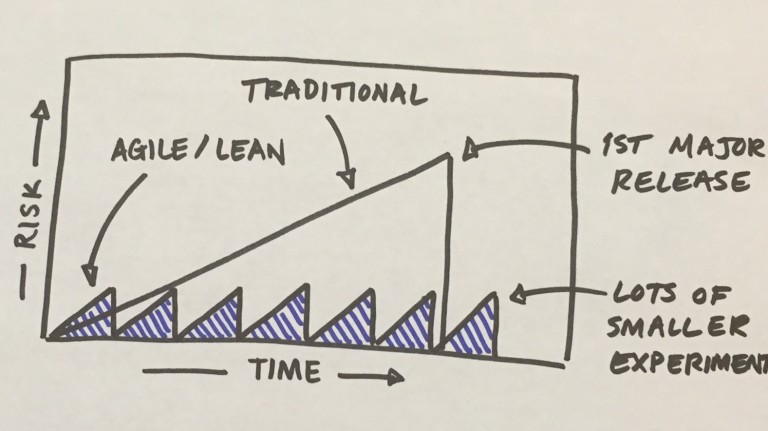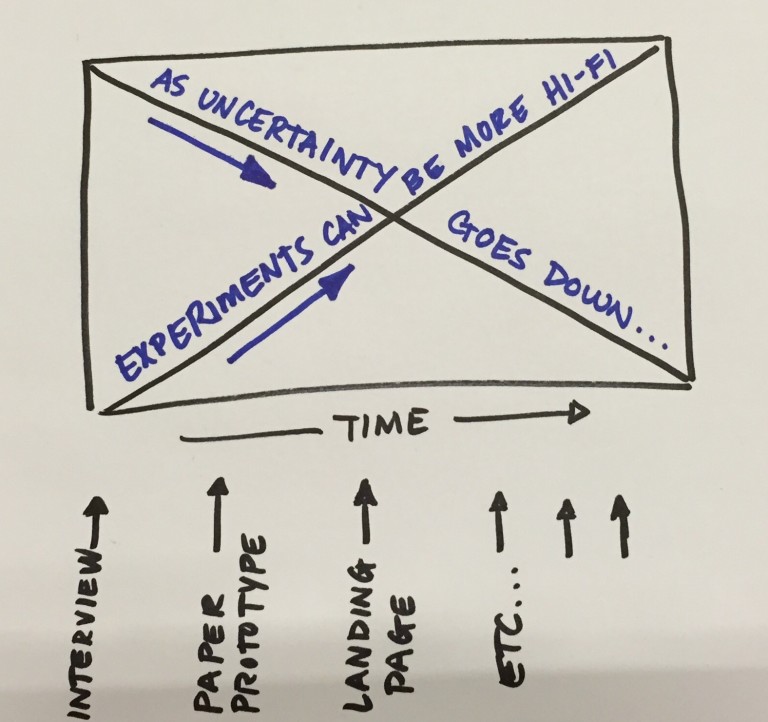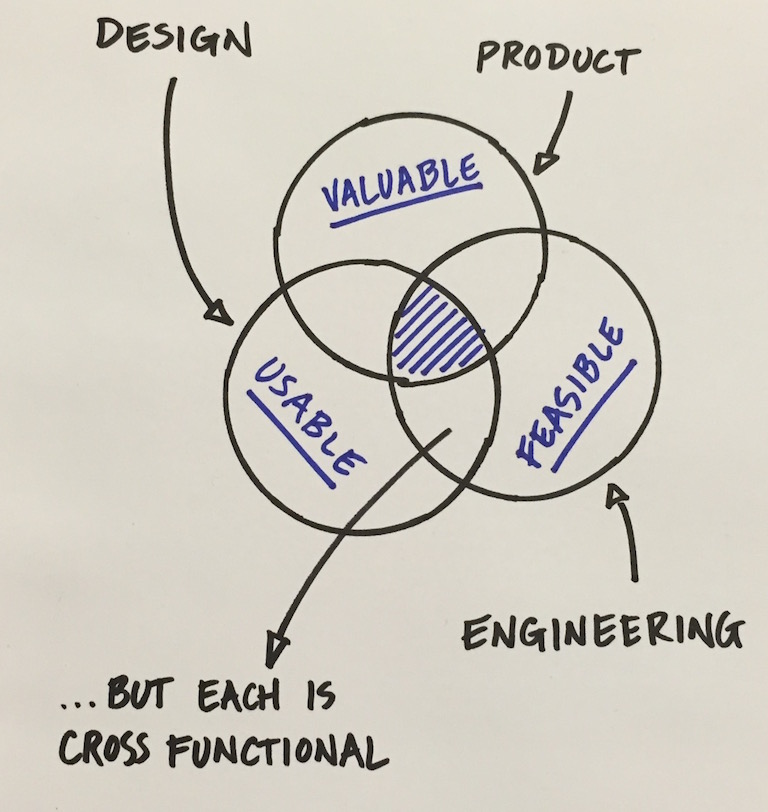1: Welcome & Prerequisites
Welcome! This course will help you determine whether or not your next business idea is worth pursuing.
But before we dive into the process, I want to give you an overview of the key principles that underlie this method. I think it will make it easier for you to follow along if you get where I am coming from.
First, big risks in product development can be sub-divided into smaller risks and mitigated separately with experiments. This is the basic idea behind both agile software development and "Lean Startup".

In traditional product development, with long product development cycles and "big bang" releases, all of the risk is accumulated in a big batch until the initial release of the product. That is a dangerous way to proceed.
In agile and lean practice, which is what we're going to be doing, tight small feedback loops with customers allow you to reduce a large risk into a series of smaller risks. This risk strategy permeates all of the practices we will go through.
Second, you always start with the simplest, cheapest experiments first. As we reduce the uncertainty in our business model and product, we give ourselves permission to try gradually more complicated experiments.

As an example, we would always do a customer interview to test the problem hypothesis (does the customer have the problem we think they do) before you building a landing page test (does the solution attract sign-ups).
Makes sense? Great.
Lastly, we say a product is successful when it is valuable, feasible, and usable, and those aspects are generally overseen by engineering, design, and product.

When it is time to build, assuming we do successfully validate your business idea, it will be critical to make sure you have all three of these responsibilities covered by your team. If you don't, we should talk. You cannot build good products with functional silos.
We aren't going to that build much in our 10 day sprint (don't worry--it is all technical work you can handle without a developer). But I think this is an important principle in product development and wanted to expose you to it anyway.
So...
To make sure you get the most value possible from the course, I have a few prerequisites that you should do now.
Download and study the Business Model Canvas. You are going to fill one out as part of the course, and I want you to familiarize yourself with the contents of the canvas.
If you don't have a domain you can use for your business experiments, go ahead and register one. We will need to use a domain that you control in order to set up a few simple landing page experiments during the course. The easiest possible thing is probably just to go to WordPress.com, because you get your domain there, and then easily create a simple site with landing pages once we get to that stage. If you are really hesitant to buy a domain now, that's OK. You can still follow along with the process.
Excited to get started? Next: Checking your assumptions
I am here to help.
Don't feel ready to go it alone? Give me a call so I can help you.
Prefer email? That's fine. I am reachable at mcafee . sam at gmail . com